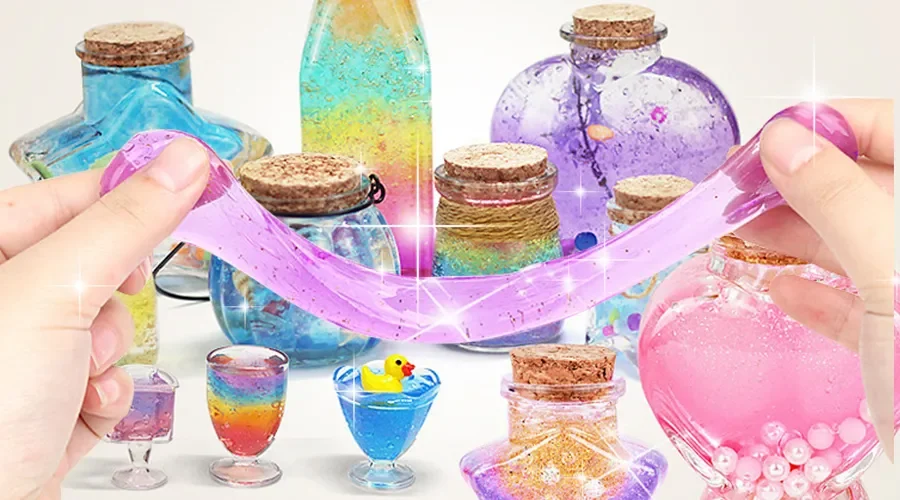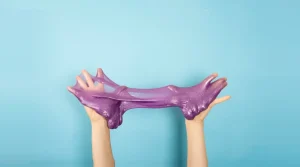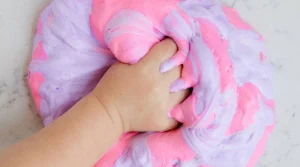
What Do Slime Toys Do? The Science and Learning Behind Slime
Curious about slime toys? Learn what they do and how they help children learn, create, and develop essential skills naturally.
#1 Toys Manufacturer in China. WhatsApp: +86 180-0088-4063. Email: [email protected]
#1 Toys Manufacturer in China. WhatsApp: +86 180-0088-4063. Email: [email protected]

Slime-making has become a favorite activity for kids and adults alike. It’s messy, creative, and endlessly customizable. At the center of this craft lies a crucial ingredient: the slime activator. Without it, your glue and glitter would never transform into stretchy, moldable slime.
But what exactly is a slime activator?
Making slime is fun, but it’s not just about dumping glue and glitter into a bowl. There’s a key ingredient that makes it all work: the slime activator. Without it, your mixture would stay a sticky mess. But what exactly is this magical component, and how does it turn glue into slime?
A slime activator is a substance that reacts with glue to form slime. The process isn’t magic—it’s science. Most activators contain compounds like borates, which create cross-links between the glue’s polymer chains. These links change the glue’s structure, making it stretchy and cohesive.
Think of it like connecting beads on a necklace. The activator acts as the string, tying the beads (polymers) together. This reaction gives slime its unique properties: stretchy, bouncy, and satisfying to squish.
There’s no one-size-fits-all slime activator. Different options can create different textures, so experimenting is part of the fun. Here are some common types:
Each activator brings its own unique properties, so the best choice depends on the type of slime you want to create. If you’re not sure where to start, try a simple recipe with baking soda and saline solution—it’s safe, easy, and kid-friendly.
The secret behind slime’s transformation lies in chemistry. Activators are the key players in this reaction, turning simple glue into stretchy, cohesive slime. But how does it all happen?
>> Slime Activator 101: What Is It and How Does It Work?
At the heart of the slime-making process is a reaction between glue and the activator.
Glue contains polymers—long, chain-like molecules that slide past each other when in liquid form. When you add an activator, it introduces borate ions (or similar compounds), which act like tiny bridges.
These ions link the polymer chains together in a process called cross-linking. Imagine a web forming between the strands of glue. This web gives slime its unique texture—stretchy, elastic, and slightly sticky, depending on the activator used.
For example, when you mix borax solution with glue, the borate ions cross-link the polyvinyl alcohol (PVA) molecules in the glue. This reaction thickens the glue and transforms it into a semi-solid slime.
The amount of activator you use can make or break your slime.
Start small—add a few drops of activator at a time and mix thoroughly. It’s easy to overdo it, especially if you’re impatient. If you add too much, you can sometimes salvage the slime by kneading it or adding more glue, but prevention is better than cure.
Common mistakes include skipping measurements or rushing the process.
By carefully measuring and mixing, you can avoid these mishaps and enjoy smooth, stretchy slime every time.
>> What Makes Slime Less Sticky? Tips for a Perfect Texture
Slime activators come in many forms, each with unique properties. Choosing the right one depends on what kind of slime you want to create and who’s making it.
Each of these activators has its strengths, so think about the texture and experience you’re aiming for before choosing.
For those seeking a gentler option, natural and borax-free activators offer a safer approach:
These alternatives are ideal for people looking to minimize exposure to harsh chemicals or for crafting slime in settings like classrooms. They may not create the same stretchiness as borax solutions, but they’re easy to clean and safe for little hands.
Using a slime activator isn’t just about adding it to glue and hoping for the best. Small adjustments can make a big difference in texture, consistency, and fun.
Over-activated slime is a rookie mistake. It feels stiff, breaks easily, and lacks that satisfying stretchiness. This happens when you use too much activator too quickly.
To fix over-activated slime, try kneading it with wet hands or adding small amounts of glue. Another trick is to mix in a drop of baby oil or lotion. This can soften the slime and restore its flexibility.
The best way to prevent over-activation? Add your activator slowly, a little at a time. Stir and check the texture frequently until it feels just right. Remember, it’s easier to add more than to fix an overload.
Sticky slime might sound fun, but too much goo can ruin the experience. If your slime won’t hold together, it’s likely under-activated. On the flip side, runny slime can result from uneven mixing or not letting the glue and activator bond properly.
To avoid this, always start with the recommended ratio of glue to activator. Stir slowly and thoroughly, scraping the sides of your bowl. Patience is key—activators often take a moment to work their magic.
Proper storage can keep your slime activator effective for longer.
Most activators have a long shelf life, but it’s a good idea to check for signs of spoilage, like unusual smells or sediment.
Label your containers clearly and store them safely, especially if kids are involved in slime-making. Organized storage means your activators are always ready when inspiration strikes.
Making your own slime activator at home is easier than you think.
Many recipes use items you already have in your kitchen or bathroom. With these simple ideas, you can experiment and create slime that’s truly one of a kind.
Fluffy Slime Recipe: To make fluffy slime, use your regular activator recipe, but mix in shaving cream before adding the activator. Shaving cream adds air and volume, making the slime light and pillowy. Adjust the amount of activator to maintain elasticity.
Clear or Glittery Slime Recipe: For clear slime, use a saline solution with no additives like baking soda or borax powder. To make it sparkle, mix glitter into the glue before activation. This method ensures a glossy finish without clouding the slime.
Crafting slime is fun, but safety should always come first. Many activators involve chemicals that require careful handling, especially when kids are involved.
Borax-Related Safety Concerns: Borax is a common slime activator, but it can cause skin irritation if handled without care. Prolonged exposure or accidental ingestion may lead to health issues, so always use it in moderation and keep it out of reach of younger children.
Skin Irritation and Accidental Ingestion: Even mild activators, like saline solution or baking soda, can irritate sensitive skin. If kids accidentally taste or swallow activators, it might cause stomach upset. Always educate children to wash their hands thoroughly after slime play.
Safe Handling Guidelines: Encourage kids to use tools, like spoons or craft sticks, to mix slime instead of their hands. Remind them not to touch their face or mouth during the activity. Clear rules help prevent mishaps and teach responsibility.
Protective Measures: For added safety, provide gloves, especially when using borax-based activators. Adult supervision is crucial, especially for younger children. Make it a collaborative activity where kids can enjoy the process under guidance.
Finding the right slime activator is key to achieving the perfect texture. By understanding how activators work, experimenting with different ratios, and choosing the safest options, you can create slime that’s both fun and safe. Always prioritize safety and enjoy the process!
Yes, you can make slime without a traditional activator, but the texture will be different. Some recipes, like the ones using cornstarch or shampoo, don’t require activators like Borax or saline solution. However, these alternatives may not create the same stretchy, cohesive slime you're used to.
If you've added too much activator, your slime might become stiff and crumbly instead of stretchy. To fix this, you can try adding a bit more glue or water to loosen it up. A good rule of thumb is to add activator slowly and mix thoroughly to prevent over-activating.
While Borax is a common slime activator, it’s important to use it with care. It can cause skin irritation if not handled properly. Always use gloves, avoid ingestion, and follow the recommended Borax-to-water ratio to minimize any risks. Consider safer alternatives if you're concerned.
Yes, food coloring can be added to your slime mix along with activators. It won’t affect the slime’s texture or consistency. Just be sure to add the color before the activator so you can mix it evenly, giving your slime vibrant, fun hues without altering its stretch.
Slime typically lasts about 1-2 weeks, depending on the ingredients and how it's stored. Slime made with activators like Borax or saline solution may last longer if stored in an airtight container. If it starts to dry out or lose its stretch, simply add a little more activator or water.
More Related...

Curious about slime toys? Learn what they do and how they help children learn, create, and develop essential skills naturally.

Uncover the science of thermochromic slime — where chemistry meets creativity through playful, color-changing reactions.

Uncover why slime play is more than fun—7 benefits include sensory learning, creativity, and fostering emotional and cognitive development.

Understand how stress-relief putty helps manage anxiety, improve focus, and promote relaxation through tactile sensory play.

Our team will answer your inquiries within 48 hours.
Copyright © 2025 GuangDong AKIA Technology Co,. Ltd. All Rights Reserved